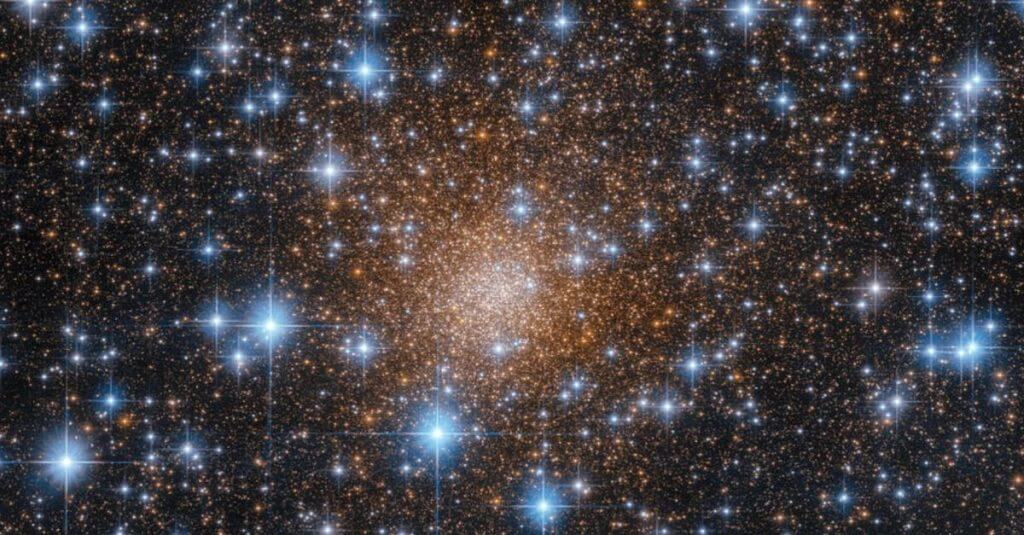
Hubble Space Telescope photo reveals stunning mix of young and old stars (Image Credit: Space.com)
One look at this stunning new image and you’re likely to repeat the immortal words of “2001: A Space Odyssey’s” astronaut Dave Bowman as he enters the mysterious black monolith… “My god, it’s full of stars!”
Like thousands of multi-colored gems scattered across a black velvet backdrop, this eye-catching Hubble Space Telescope photo of the globular cluster Liller 1 is cause to pause and reflect upon the unimaginable beauty of the universe.
Cast in a soft orange-red hue, the cluster’s center gets some of its attention pulled away by the brilliant array of intensely-bright blue stars on the perimeter that engulf the senses. Hubble’s Wide Field Camera 3 (WFC3) and its ability to pierce through wavelengths of light that go unregistered by the human eye is what makes this gorgeous astronomical image possible.
Related: The best Hubble Space Telescope images of all time!
Liller 1 lies some 30,000 light-years from Earth within the Milky Way‘s ‘bulge,’ which is a crowded, dust-infused area in the middle of our home galaxy, according to a NASA statement (opens in new tab).
Deep clouds of interstellar dust that deftly scatters light in this region makes Liller 1 very difficult to see without the help of Hubble’s precise instruments. Dust clouds like this are particularly good at obscuring blue light.
The WFC3 is accommodating to both visible and near-infrared wavelengths, and its camera can penetrate the dusty cosmic veil to expose Liller 1 in all its dazzling luminosity, allowing us to see in greater detail those dazzling blue-hued stars.

A standout amongst its peers, Liller 1 has some unique properties as it is comprised of a blend of extremely young and very old stars, unlike most globular cluster that contain only ancient stars.
Since the stars in Liller 1 range so greatly in age, from 1 billion years old to 12 billion years old, astronomers had deduced that this rare and fertile stellar system has remained a hot bed of star formation for mind-boggling measurements of time.
Follow us on Twitter @Spacedotcom (opens in new tab) and on Facebook (opens in new tab).





